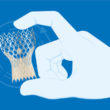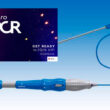Transcatheter aortic valve replacement (TAVR) by transfemoral access has shown great benefit for different risk groups, but its long-term durability is still uncertain. Available evidence comes from small analysis and a single randomized trial with 280 patients and an 8 year follow-up: the NOTION Trial, where TAVR showed less valvular degeneration than aortic valve replacement (AVR) surgery....
Should We Treat Stroke Percutaneously in TAVR?
Since its inception, transcatheter aortic valve replacement (TAVR) has improved greatly. However, there still are five big challenges to be solved: paravalvular leak, conduction disturbances, debilitating stroke, impaired kidney function, and major vascular complications and bleeding. Most cases of stroke are periprocedural and ischemic. So far, they have not been well analyzed in terms of...
TAVR in Bicuspid Patients: Are Outcomes the Same in Men and Women?
Bicuspid aortic valve stenosis (BAV) has not yet been analyzed in large, randomized studies, and TAVR in this scenario has been assessed only by small fairly studies. However, the information available is quite promising. TAVR in women generally presents more complications than in men, but severe bicuspid aortic valve stenosis receiving TAVR has not been...
The Best of the Main Arena at SOLACI-SOCIME 2022: TAVR Complex Anatomy
In the transcatheter aortic valve replacement (TAVR) session we had a presentation by Dr. John P. Vavalle (USA), head of the Structural Heart Disease Program at the University of North Carolina at Chapel Hill. In his presentation, he showed how far the limits of percutaneous aortic valve implantation can be stretched by briefly showing successful...
Low Risk Patients: TAVR with Self-Expanding Valves Offers Similar Outcomes to Surgery Based on a Bayesian Analysis?
When compared against surgical valve replacement (SAVR) transcatheter aortic valve replacement (TAVR) has shown benefits across different risk groups, not only in events as death and stroke, but also in quality of life (especially in the first months post procedure) and improved symptoms. However, a catch-up phenomenon was observed in low-risk patients between the first...
HYDRA CE | New Models for TAVR Development
The Hydra CE has shown favorable one year efficacy for the new transcatheter aortic valve model, with large effective orifice and low transvalvular gradient associated to an acceptable complications rate. With this study, the Hydra will obtain the CE mark and go after FDA approval (just as all new devices). This study looked at safety...
TCT 2021 | SURTAVI: Good News for the Self-Expandable Valve at 5 Years
After a 5-year followup, the transcatheter aortic replacement (TAVR) with the self-expandable valve has offered clinical outcomes similar to surgical aortic valve replacement (SAVR) outcomes for intermediate risk patients. As we already knew form the 2-year followup, the all-cause or disabling stroke rate at 5 years between TAVR and SAVR continued to be similar (31.3%...
Device Evolution Also Impacts on Valve in Valve
TAVR to treat dysfunctional biological prosthetics (ViV) with the last generation self-expandable supra-annular prosthetic offers excellent results both clinical and hemodynamic. In addition, there were additional reductions of paravalvular regurgitation compared against the original models. The present registry published in JAHA is the most extensive to treat this issue and replicate outcomes from the clinical...
EuroPCR 2021 | Evolut Low Risk: Two-Year Results of The Self-Expanding Valve in Low-Risk Patients
Transcatheter aortic valve replacement (TAVR) with the Evolut self-expanding valve was non-inferior to surgery in patients with low surgical risk. After two years, the primary endpoint of death or disabling stroke was similar between both strategies. This presentation at EuroPCR 2021 reinforces the results presented during the American College of Cardiology (ACC) 2019 Congress and...
EuroPCR 2021 | TVT Registry: Outcomes of TAVR in Low Surgical Risk Bicuspids
In bicuspid patients with aortic stenosis and low surgical risk, transcatheter aortic valve replacement (TAVR) with balloon expandable valve offers results comparable to normal anatomy results. These data come from the TVT registry, presented at EuroPCR 2021 scientific sessions. Stroke and death rates (inhospital, 30 days and one year) in bicuspid patients did not result...









